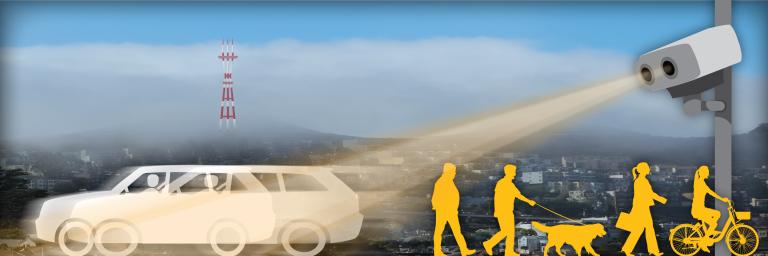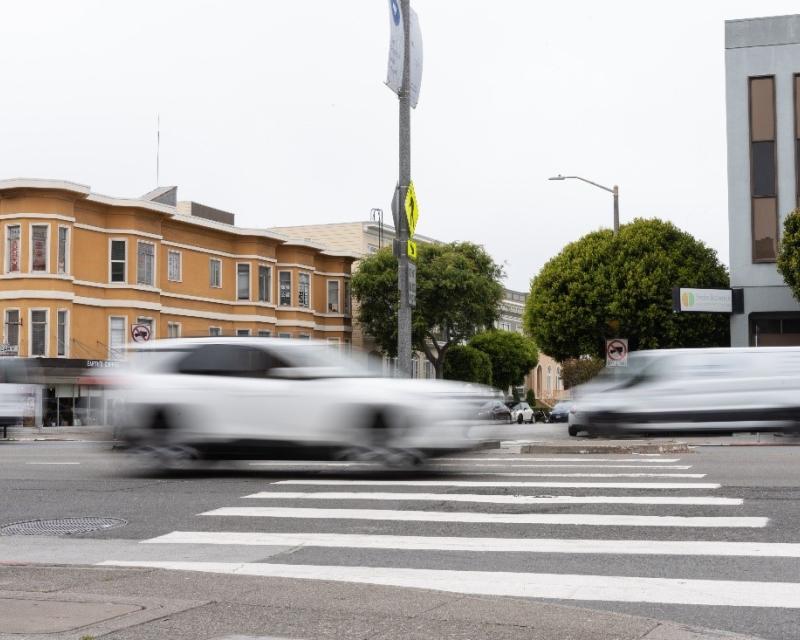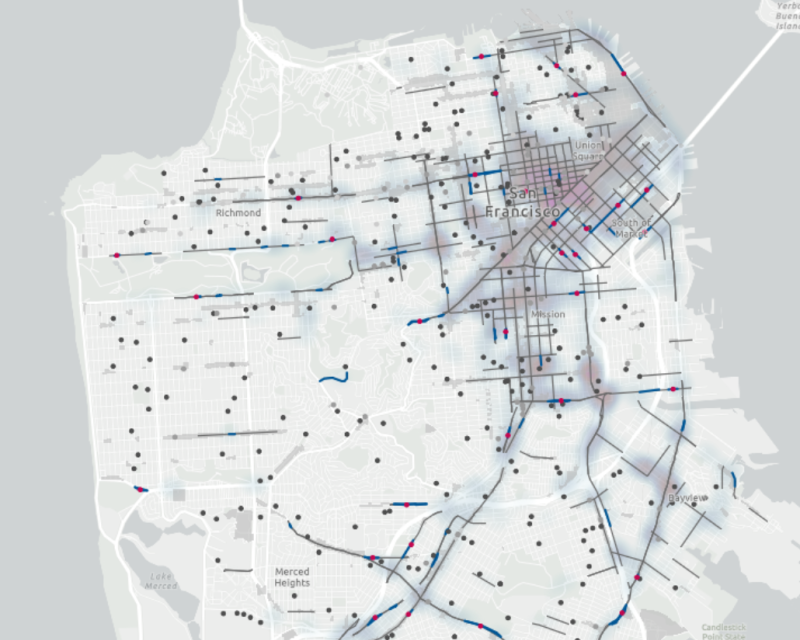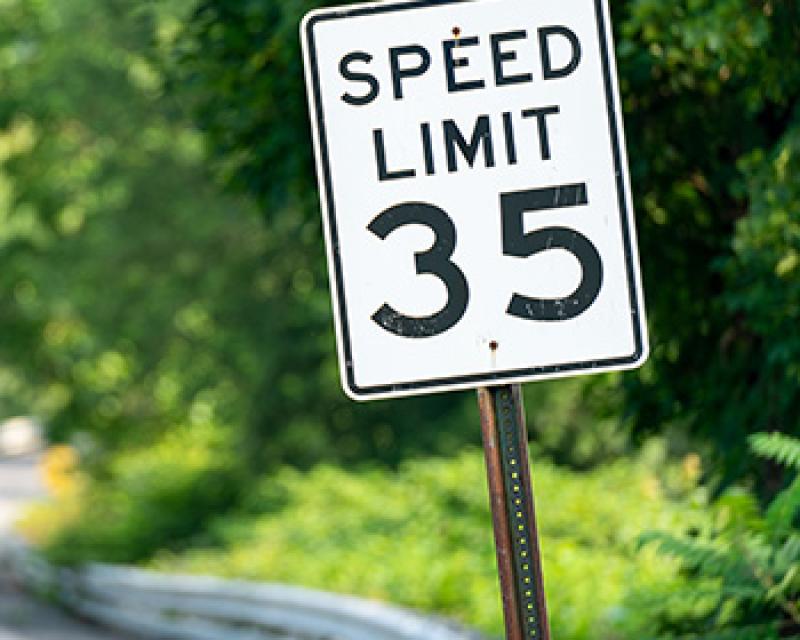Did you receive a speeding ticket? New
You can now look up and pay speeding tickets sent in the mail by the SFMTA on our speeding ticket webpage.
Speed safety cameras are a proven tool to address excessive speeding and reduce severe and fatal injury traffic collisions. With the passage of AB 645, San Francisco can now utilize this life-saving technology to slow down speeding vehicles on our streets. You can learn more about how we developed our speed camera program on our FAQ page.
All radar equipment are calibrated and certificated by a 3rd party vendor at least once a year and undergo routine inspection every month. For the calibration specification sheets, visit our calibration document page.
Camera Locations
The SFMTA Speed Safety Camera program launched on March 20, and all cameras were issuing warnings as of June 6, 2025. The program began issuing citations on August 5, 2025. Cameras enforce both directions of travel, unless noted otherwise.
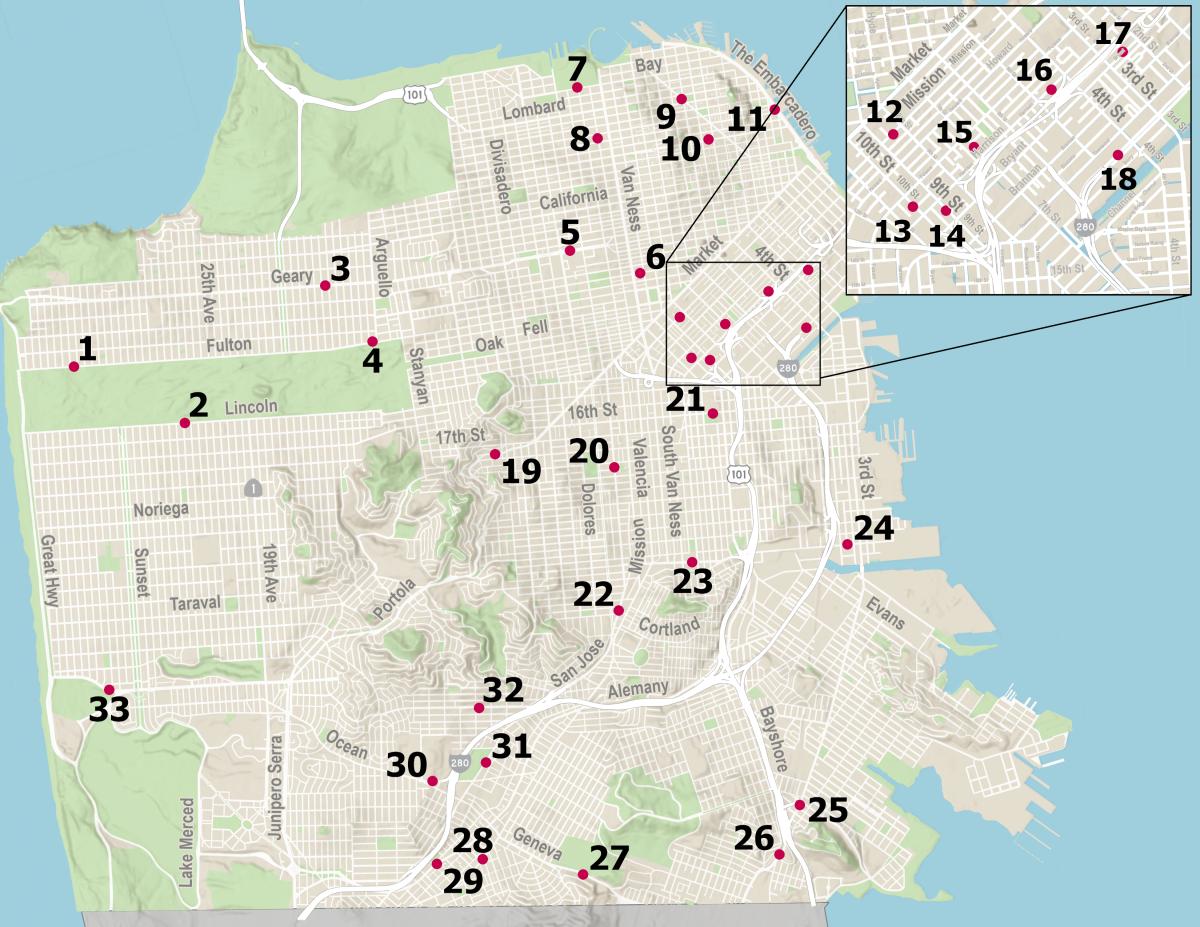
| ID | Street Segment | Posted Speed Limit | Operation Status |
|---|---|---|---|
| 1 | Fulton Street from 42nd to 43rd Ave | 25 MPH | Issuing Violations |
| 2 | Lincoln Way from 27th to 28th Ave | 30 MPH | Issuing Violations |
| 3 | Geary Blvd from 7th to 8th Ave | 25 MPH | Issuing Violations |
| 4 | Fulton St from 2nd Ave to Arguello Blvd | 25 MPH | Issuing Violations |
| 5 | Geary Blvd from Webster to Buchanan St | 30 MPH | Issuing Violations |
| 6 | Turk St from Van Ness Ave to Polk St | 20 MPH | Issuing Violations |
| 7 | Bay St from Octavia to Gough St | 25 MPH | Issuing Violations |
| 8 | Franklin St from Union to Green St | 25 MPH | Issuing Violations |
| 9 | Columbus Ave from Lombard to Greenwich St | 20 MPH | Issuing Violations |
| 10 | Broadway from Powell to Stockton St | 20 MPH | Issuing Violations |
| 11 | The Embarcadero from Green to Battery St | 30 MPH | Issuing Violations |
| 12 | Mission St from 8th to 9th St | 20 MPH | Issuing Violations |
| 13 | 10th St from Harrison to Folsom St | 25 MPH | Issuing Violations |
| 14 | 9th St from Bryant to Harrison St | 25 MPH | Issuing Violations |
| 15 | 7th St from Harrison to Folsom St | 25 MPH | Issuing Violations |
| 16 | Harrison St from 4th to 5th St | 25 MPH | Issuing Violations |
| 17 | Bryant St from 2nd to 3rd St | 25 MPH | Issuing Violations |
| 18 | King St (EB only) from 4th to 5th St | 30 MPH | Issuing Violations |
| 19 | Market St from Danvers to Douglass St | 30 MPH | Issuing Violations |
| 20 | Guerrero St from 19th to 20th St | 25 MPH | Issuing Violations |
| 21 | 16th St from Bryant St to Potrero Ave | 25 MPH | Issuing Violations |
| 22 | San Jose Ave from 29th to 30th St | 25 MPH | Issuing Violations |
| 23 | Cesar Chavez St from Folsom to Harrison St | 25 MPH | Issuing Violations |
| 24 | Cesar Chavez St from Indiana to Tennessee St | 25 MPH | Issuing Violations |
| 25 | 3rd St (NB only) from Key to Jamestown Ave | 25 MPH | Issuing Violations |
| 26 | Bayshore Blvd (SB only) from 101 off-ramp to Tunnel Ave | 30 MPH | Issuing Violations |
| 27 | Geneva Ave from Prague St to Brookdale Ave | 30 MPH | Issuing Violations |
| 28 | Mission St from Ottawa Ave to Allison St | 20 MPH | Issuing Violations |
| 29 | Alemany Blvd from Farragut to Naglee Ave | 30 MPH | Issuing Violations |
| 30 | Ocean Ave from Frida Kahlo Way to Howth St | 25 MPH | Issuing Violations |
| 31 | San Jose Ave from Santa Ynez to Ocean Ave | 25 MPH | Issuing Violations |
| 32 | Monterey Blvd from Edna to Congo St | 25 MPH | Issuing Violations |
| 33 | Sloat Blvd from 41st Ave to Skyline Blvd | 30 MPH | Issuing Violations |
Speeding Ticket amounts
Speeding tickets are set by the state law, AB 645, and are as follows:
| Speed | Original Amount | Updated Amount - Low-Income See Requirements |
Updated Amount - Public Benefits See Requirements |
|---|---|---|---|
| 11-15 MPH over posted speed limit | $50 | $25 | $10 |
| 16-25 MPH over posted speed limit | $100 | $50 | $20 |
| 26+ MPH over posted speed limit | $200 | $100 | $40 |
| Any vehicle traveling 100 MPH or more | $500 | $250 | $100 |
Low Income Fee Requirements: How to Access Low-Income Transit Fares and Fee Waivers for Speeding Tickets
Public Benefits Programs include CalFresh, CalWORKS, Medi-Cal, CAPI, or IHSS
